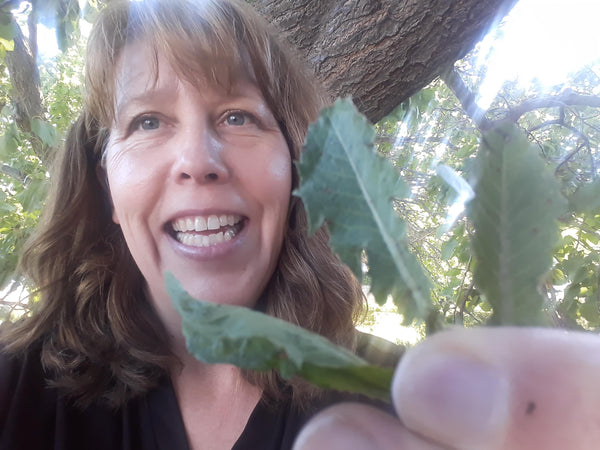
Learning About Dandelions
Other Names for Dandelion
The scientific name for dandelion is Taraxacum officinale, but throughout history it has been called many things. Here are some of them:
- Lion's-tooth
- Cankerwort
- Irish Daisy
- Monk's-head
- Priest's-crown
- Puffball
- Blowball
What to Look For.
Most of us know a dandelion when we see one, especially if it is blooming with that bright yellow flower. But dandelions mostly bloom in the spring, so how do you know dandelion leaves without the blossom?
There are a few ways you can identify a dandelion. Let’s talk about some of them:
- Dandelion leaves often have a jagged edge. You could think about them being jagged like a lion's teeth, with deep cuts along the edge. However, sometimes these leaves can grow with a smoother edge.
- The leaves grow in a rosette, which means they are all growing out of the center of the plant.
- If you were to dig up a dandelion plant you would see that it has a deep taproot.

How is a Dandelion Useful?
We usually think of dandelions as weeds. But they are nutritious and have benefits to our health when taken as an herb. They can be picked fresh and added to your salad. It is important, however, to make sure you are getting dandelions that have not been sprayed with pesticides. So before you pick dandelions from the back yard and use them, ask some questions about whether that yard has been sprayed.
One of the dandelion benefits most known to herbalists is the support it gives the liver. Its cleansing and nourishing properties help to support the liver so that it can function more optimally.
Some of the nutrients you will find in dandelions are:
- Vitamin A: Which is important for healthy eyes, lungs, heart and more.
- Vitamin B: This is a great vitamin that nourishes our nerves and helps us deal with stress better.
- Vitamin C: Antioxidant that supports the cardiovascular system and so much more. Studies have shown that this vitamin supports the body in recovering from the common cold.
- Iron: Important nutrient to help the body build hemoglobin, a protein that helps carry oxygen to the heart.
- Potassium: Important for people trying to keep their blood pressure down.
|
|
What Parts of the Dandelion Can Be Used?
It is always good to know what part of an herb is to be used, but in the case of the dandelion we really can use all of the parts, including the leaves, stems, flowers and roots.
If you are making a salad, you probably want the young leaves. The leaves can also be dried and used to make an herbal tea year-round.
The roots are often used to make a drink that some people use instead of coffee. The roots are generally more dense in certain nutrients.
Happy Hunting
Dandelions are easy to find. If you are watching, you will see them everywhere, even when they are not in bloom.
By Melanie Skelton, Master Herbalist
Sources:
School of Natural Healing. Medicinal Qualities of Dandelion. Retrieved on July 16, 2022 from https://www.herballegacy.com/Chhabra_Medicinal.html
National Institutes of Health. Vitamin A and Carotenoids. Retrieved on July 16, 2022 from https://ods.od.nih.gov/factsheets/VitaminA-Consumer/#:~:text=Vitamin%20A%20is%20important%20for,fruits%20and%20vegetables%20their%20color.
National Institutes of Health. Vitamin C. Retrieved on July 16, 2022 from https://ods.od.nih.gov/factsheets/VitaminC-HealthProfessional/
National Institutes of Health. Iron. Retrieved on July 16, 2022 from https://ods.od.nih.gov/factsheets/Iron-Consumer/



